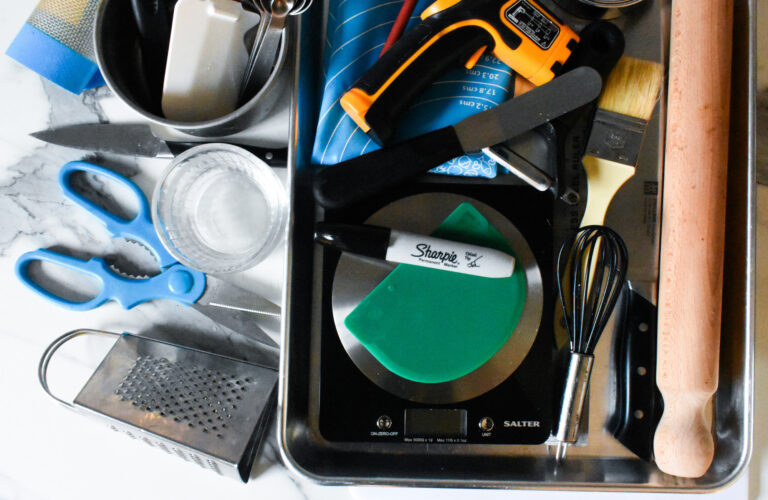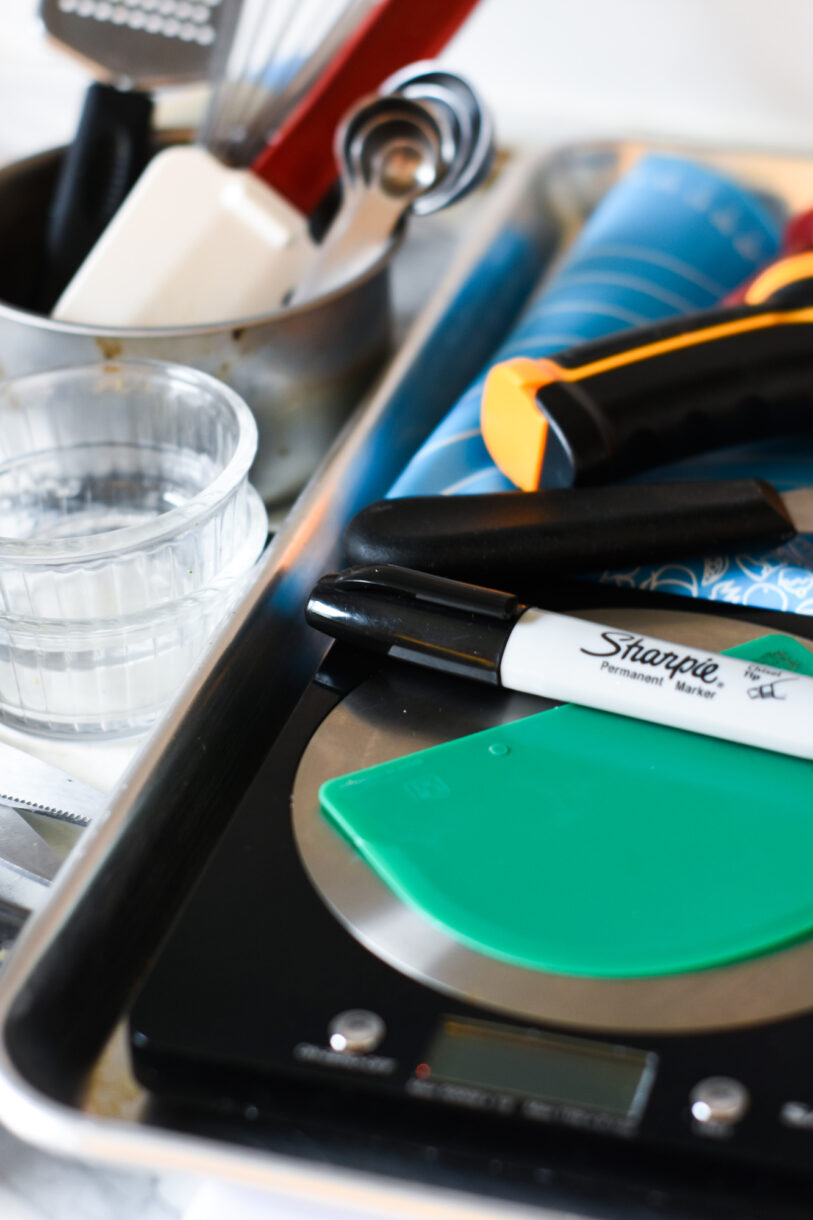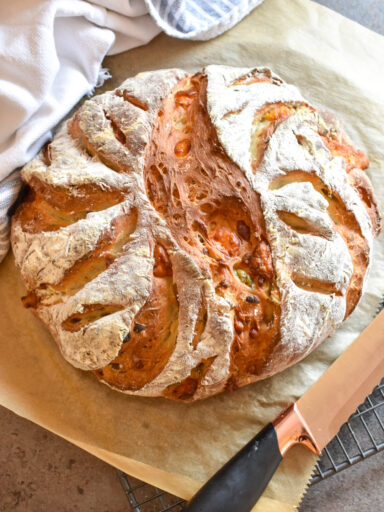This post may contain affiliate links. Please read the disclosure policy to learn more.
Thank you for supporting this blog!
In my work as a recipe developer and pastry chef, I often find myself reaching for the same kitchen tools over and over again. While workarounds or alternatives are sometimes an option, these tools and supplies make my day-to-day work much, much easier. (And these kitchen tools come in handy for hobby cooking and baking, too!)
If you’re looking to round out your baking toolkit, I recommend the following:
Quick peeler, or Y-peeler
In pastry school, I could never quite manage to peel fruit efficiently with a traditional kitchen peeler. A classmate suggested adding a Y-peeler (sometimes called a “quick peeler“) to my toolkit, and it made a world of difference! Not only does this little gadget help me to peel fruits and vegetables with ease, but it’s perfect for making carrot ribbons and garnishes, too.
Kitchen shears
A quality pair of kitchen scissors are an absolute must-have, and one of the kitchen tools I can’t live without. I frequently use them for trimming pastry doughs and scoring breads and rolls. They’re also great for cutting pizza, or tackling tough-to-open food packaging.
Sharp chef’s knife
Of all of the knives in my kit, the chef’s knife is the one I use on a near-daily basis. I suggest going with a good brand like Zwilling, Henckels, or Wusthof. They’re more expensive than cheaper knives from a big-box or discount store, but high-quality, well-maintained knives can last a lifetime.
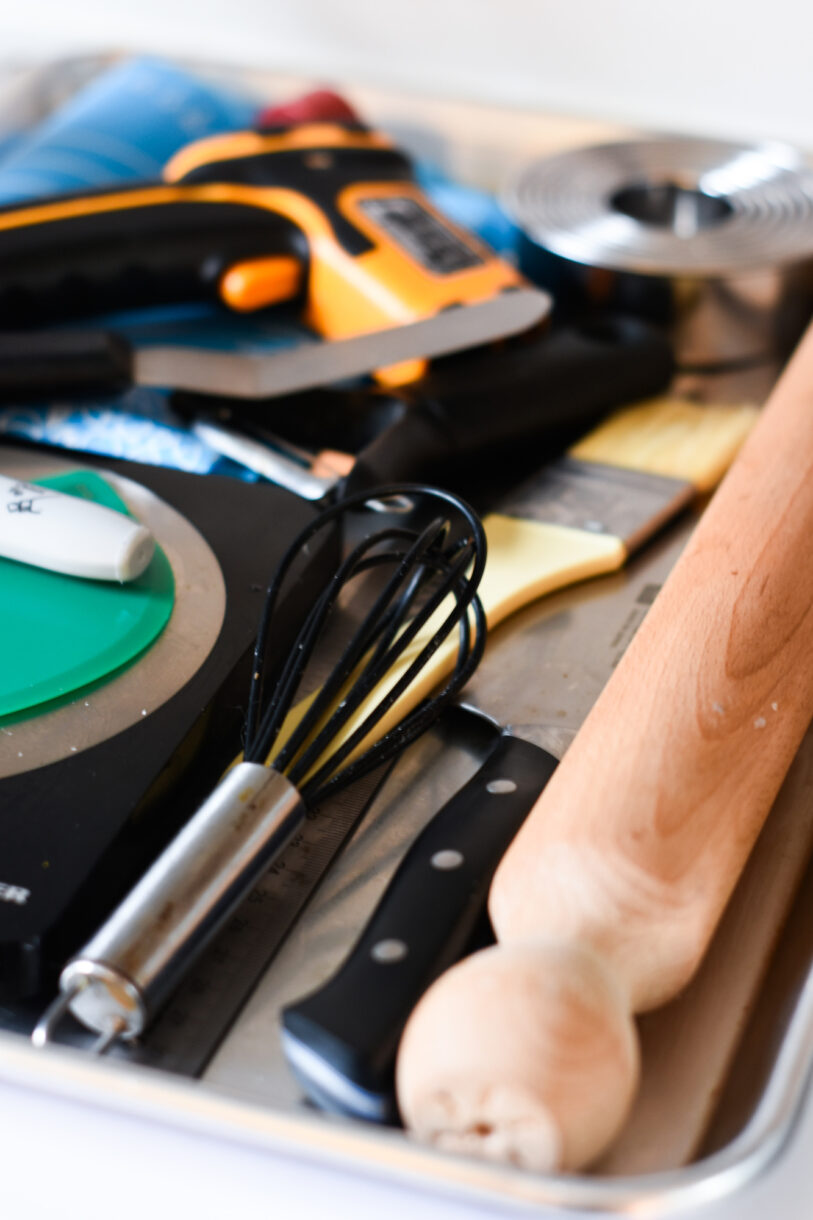
Natural bristled pastry brush
I use my pastry brushes for applying egg washes, soaking syrups, and glazes, and sometimes for brushing away excess flour, too. Generally, I prefer natural bristles to silicone; I often find that the silicone brushes aren’t fine enough to apply washes with precision, and they also seem to fall apart more easily. It’s good to keep a thin pastry brush (about 1-inch) and a wider one on hand to use as needed.
Rolling mat and rolling pin
As a renter, I use a silicone rolling mat to avoid damaging the counters in my kitchen. I also find that I have less issues with dough sticking to the surface when using a rolling mat rather than working directly on the countertop. A mat makes cleanup much easier, and the pre-printed measurements come in handy as well. I use mine my rolling mat with a traditional wooden rolling pin.
Small stepped palette knife
At the beginning of pastry school, one of the chef-instructors suggested purchasing a tiny stepped palette knife to add to our tool collections, as the school-issued knife kit only came with large palette knives. This small knife has been an absolute lifesaver for me on many occasions, from frosting cakes and cookies to transferring delicate pastries from counter to presentation board.
Digital and gun thermometers
Both of these are a must if you’re making gummy candies, caramel, or marshmallows; tempering chocolate; or working with molten sugar. Depending on the application, I alternate between my trusty Taylor Instant-Read Digital Thermometer and a gun-style infrared laser thermometer. A clip-style candy thermometer can also be useful when working in larger batches.
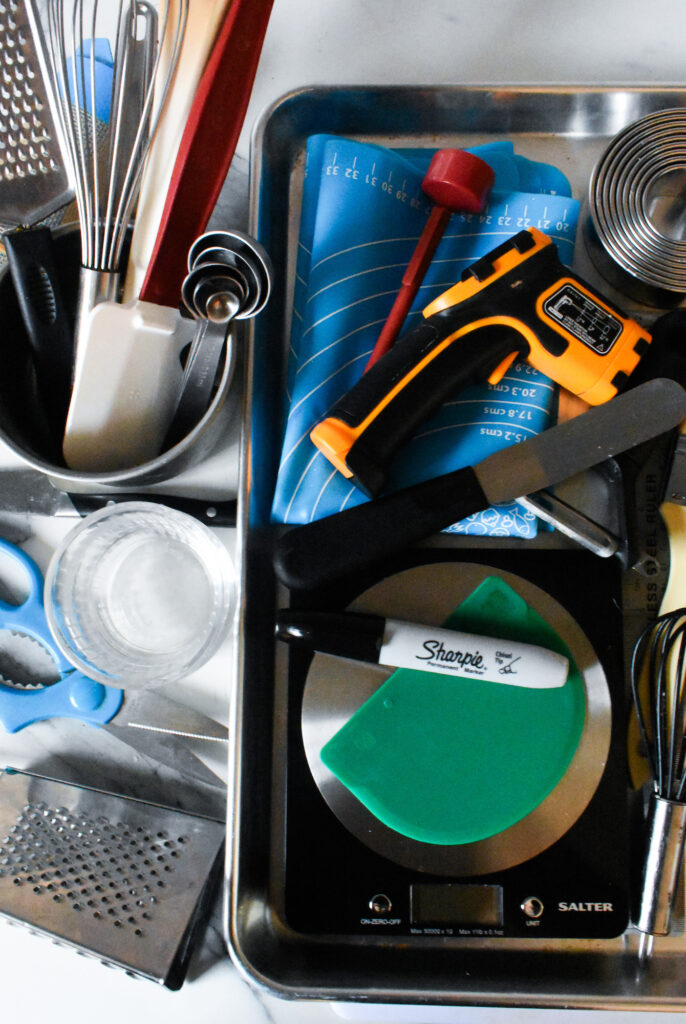 Kitchen scale
Kitchen scale
Baking is all about precision, and it’s difficult to accurately measure ingredients like flour and confectioner’s sugar when using volume alone. (Ask ten people how much a cup of flour weighs, and you’ll probably get ten different answers!) In addition to measuring with precision, a kitchen scale means less cleanup because you can weigh everything directly into the mixing bowl (no dirty measuring cups!) It’s also great for sticky ingredients like corn syrup and molasses, which are hard to measure accurately in a cup. (You’ll also have less food waste—sticky or syrup-y ingredients tend to adhere to the measuring cup, so a lot of product is lost in the process.) I always keep two kitchen scales on hand, just in case I have a scale malfunction or the batteries die mid-bake! You don’t need to spend much money, either. There are options on Amazon for as little as $8.
Tiny saucepan
I love my teeny-tiny saucepan! I recommend one measuring 4-5 inches in diameter. It’s great when warming purées, heating cream for ganaches, and reducing small amounts of liquid.
Half sheet rimmed tray
A half-sheet is a versatile tray large enough to work well for most baking projects, including cookies, scones, shortcakes, and puff pastry appetizers, as well as savory applications such as roasted vegetables and sheet pan meals. In addition, I find that recipe websites and blogs often specify this size tray as standard, so it helps to keep one or two on hand.
Silicone baking mats
I own so many silicone baking mats (sometimes referred to as Silpats, in the same way that we call a tissue a Kleenex, or a vaccum a Hoover!), in virtually every size imaginable. These are great for baking, chocolatemaking, and confectionery. (The one exception for me is molten sugar. In instances where I want a smooth finished product, I’ll generally opt for parchment; the textured mat can sometimes imprint small marks on the sugar.) You can also find silicone mats pre-printed with circles, which offer a helpful template when piping macarons. Silicone mats also make for easy cleanup, since there are no trays to wash.
Set of metal measuring spoons
While scales are amazing, they’re not great at measuring tiny quantities. (If you find yourself working in miniscule measurements frequently, you can invest in a jeweler’s scale, but I don’t use mine often enough to recommend it as an absolute must-have.) Use metal measuring spoons for portioning out small quantities of spices, leavening agents, flavor oils/extracts, and salt.
Wire whisk and silicone whisk
I alternate between the two depending on the recipe, although the wire whisk tends to be my go-to for most applications. Note that if you are using a non-stick pan you’ll want to use a silicone whisk; wire can damage the pan’s nonstick coating.
Rubber spatula
While we all own our share of novelty spatulas, a good-quality rubber spatula is a must for baking and candymaking, especially when working at higher heats. This red-handled Rubbermaid spatula is standard in many culinary schools and professional kitchens, and is the one I have in my own kit as well.
Microplane zester
I use my microplane for zesting citrus peels (which I often add to recipes for flavor, as well as using zest as a garnish), creating fine chocolate shavings, and grating hard cheeses like Parmesan and Pecorino Romano.
Box grater
For grating semi-hard cheeses, or for recipes where a fine zest is not required. (Also great for grating frozen butter, which is sometimes suggested in shortbread, biscuit, and shortcake recipes). It’s worth investing in a box grater as it allows you to cook with blocks of quality cheese, rather than the pre-shredded, bagged stuff. (The latter often contains anti-caking agents and other additives, and won’t melt as well as freshly grated; I also find that it’s not nearly as flavorful as the fresh stuff.)
Round metal cutter set
A set of round cutters is one of the kitchen tools that is a must for any baker. Round metal cutters come in handy for cutting biscuits and shortcakes, making cookies and hand pies in different sizes, as well as reshaping cookies into perfectly round, bakery-ready treats.
Heat-safe stirring spoon
For stirring very hot liquids, like molten sugar and caramel. Cheap plastic spoons and spatulas can melt into your candy mixture and quickly ruin an entire batch. Silicone is a good choice, and a great addition to your repertoire of kitchen tools.
Ruler
Any good metal ruler will work. I reach for mine whenever I need to create evenly-sized strips (such as puff pastry sticks) or straight edges (think gingerbread houses). It’s also good for double-checking the amount of space in between unbaked balls of dough to ensure that they’ll have room to spread as they bake, or for measuring the thickness of biscuit dough or rolled cookies. Even if you already have a ruler in your home office, I suggest investing in a clean, new one and reserving it for kitchen use only.
Black Sharpies
We don’t think of markers as kitchen tools, but they are! Someone once told me that it’s easy to spot a pastry chef because they always have a Sharpie…and I think there is some truth to this! I always keep one of these permanent markers in the pocket of my chef’s jacket, and another in my knife kit, plus a few in my kitchen. (And one or two in my handbag, too!) Use them for marking times and dates on items before placing them in the fridge, tracing parchment or acetate pattern pieces, or making notes along the way.
Bench scraper
For breadmaking, scones/biscuits, and other dough-based projects. I prefer a plastic scraper to metal; the metal can damage your bowls, countertop, or rolling mat. I also like to have a few of the zigzag edged variety on hand for creating ribbons and designs with tempered chocolate. Even though I have more scrapers than I can count, somehow it’s still never enough!
Immersion blender
I use my immersion blender (sometimes called a stick blender or hand blender) for all sorts of applications. It’s especially useful for blending soups and sauces. In pastry, it’s great for making fruit purées and for blitzing entremet glazes (just tap your cup on the countertop before pouring, to remove the bubbles!)
Large plastic chopping board
Pretty self-explanatory, really! Use it for chopping fruits and vegetables, or for cutting pastry. (You never want to cut directly on the countertop; always place a cutting board in between.) I have a small kitchen, so sometimes I also place mine over the sink and use it as an extra workspace or storage area.
Set of metal bowls
It’s nice to have a range of bowl sizes to choose from, so you can mix and match depending on the recipe you’re making. Metal mixing bowl sets are also good for those of us with limited kitchen space, since they stack nicely inside one another.
Small glass or plastic bowls
Tiny bowls are a must-have for me, and I have a few different kinds. I use them for mise-en-place, portioning out small quantities of spices, chopped herbs, garnishes, sprinkles, berries, chopped chocolate, nuts, sea salt, candies, and a million other ingredients to use as needed. (It’s a much neater way to work, and requires less space than a bunch of open bags and boxes.) Little bowls also really handy for food photography. I like to add a few spoonfuls of one or two ingredients (like chopped herbs, sugar, or grated cheese) to a little bowl and add it to my styling setup.
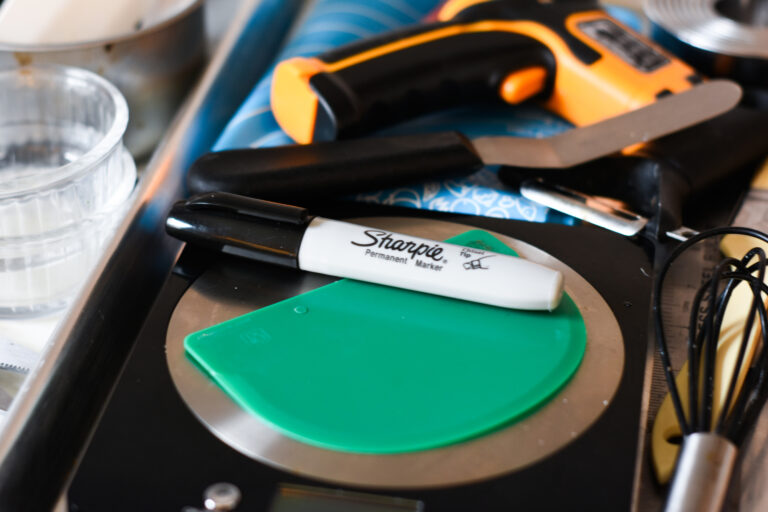
If you’re inspired by this post, buy any of these kitchen tools, or make any of my recipes, don’t forget to tag me @bastecutfold or use the hashtag #bastecutfold on Instagram. I always love to see what you’re making!
 About Rebecca:
About Rebecca:
Rebecca earned the Diplôme de Pâtisserie from Le Cordon Bleu London in 2020. She also holds an MSc in Culinary Innovation from Le Cordon Bleu and Birkbeck, University of London, and a Professional Chocolatier’s Certificate from Ecole Chocolate. She currently works as a recipe developer, food stylist, food photographer, writer, and pastry chef. Feel free to make one of her original recipes, or to follow her on Instagram @bastecutfold for more baking and pastry inspiration!
